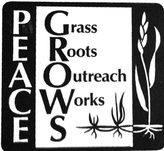Violence uses force to hurt life and escalates through retaliation.
Let's begin by asking ourselves questions and looking at some examples.
*I think an example of Violence is...
*Do you find your answer on the following video and chart?
*Do you find your answer on the following video and chart?
|
Here to move slide
|
|
Now that you have looked at the presentation and video above, continue by attempting and reviewing these questions:
CLICK! on the question for the answer:
1) What will be our working definition of violence?
Violence uses force to harm life.
2) What is conflict?
Conflict is an opposition of ideas or actions, problems or disagreement.
Conflict does not need to lead to violence. How conflict is handled determines if it is good or bad.
3) What part does anger play?
Anger is an emotion common to all people. It can be good if it contributes to bringing problems out and leading to solutions. Anger and conflict, both givens, probably cannot be avoided.
Here is one of many actual cases that show what nonviolence can do.
Case Study: |
"Quick Change Artist"
|
|
An older woman was walking down a city street carrying her heavy shopping bags. Two young men came up behind her and overtook her on both sides. She knew what they were up to but she was far from any residence or person she knew.
Before they got close enough to touch her or anything, she turned and grinned at each of them, thrust her packages into their arms, and told them how relieved she felt now that they had come along. |
"I was really nervous on this street," she said, "And these bags are so heavy. Would you help me?" The men took the bags instinctively, and off the three of them walked together, the woman thanking the two men all the while for being such good and helpful people.
See Safe Passage on City Streets (Samuel), p. 89. Analysis: The older woman uses many tactics which will later be introduced in the sessions. However, probably the most apparent tactic used in this case study is her use of surprise in the situation. Her unexpected response to the muggers caused the muggers to respond in an automatic and unplanned manner. |
VIOLENCE ESCALATES
What does this mean in our lives?
The more violence escalates, the harder it becomes to stop and reverse. Even small signs of tension or discontent should be addressed.
The following films are an example of how an extreme situation was not escalated due to nonviolent choices:
|
|
|
The History and Legacy of Jane Addams, Case Study and Video Clip
The following case is about this historical figure and her use of deescalation.
Case Study: |
Bedroom Intruder
|
Meet Jane AddamsAnalysis:
Jane Addams did not "lose face", rejected violence, maintained conduct, relations, and integrity. She also worked to learn all of the facts and be helpful, while using her mental resources and surprise tactics. Finally, she loved her enemy. *These are all tactics you will find in the chart regarding the difference between violent and nonviolent tactics. |
Responding with tactics that work comes from the goals and attitudes one has before the situation occurs. The following chart represents opposite ends of a continuum of behavior. With what responses are you familiar?
|
Goals: Attitudes:
|
Violence...
|
...Nonviolence
......Make friends with the opponent
......Work with the opponent to solve the problem together ......Aim for Win-Win mutually satisfactory settlement ......Be friendly and caring toward the opponent ......Avoid any harm toward opponent ......Try to overcome the opponent's hatred and fear ......Think and act clearly and with self-control. ......Hold firmly and calmly to your goals and values even while suffering rage or attack |
What PRINCIPLES & TECHNIQUES of nonviolence do you already use?
|
Here to move slide
|
The next two historical cases show the vast differences in principles between violence and nonviolence.
Case Studies: |
River of Death in Brazil
|
Buddhist Abbot's Courage
|
"I do not want to give the impression that nonviolence will work miracles overnight. Men are not easily moved from their mental ruts or purged of their prejudice and irrational feelings. When the underprivileged demand freedom, the privileged first react with bitterness and resistance. So the nonviolent approach does not immediately change the hearts of the oppressor. It first does something to the hearts and souls of those committed to it. It gives them a new self-respect; it calls up resources of strength and courage that they did not know they had. Finally, it reaches the opponent and so stirs his conscience that reconciliation becomes reality."
"Speech on Love and Peace"
Review and Reflect
Major point to remember:
Violence uses force to hurt life and escalates through retaliation.
To Reflect: Optional Activities
| |||
| Behaviors that Lead to Escalation or Deescalation |

